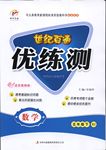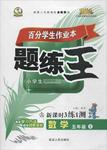阅读理解
Saving the Planet with Earth-Friendly Bamboo Products
Jackie Heinricher's love affair with bamboo started in her backyard.“As a child, I remember playing among the golden bamboo my dad had planted, and when there was a slight wind, the bamboos sounded really musical.”
A fisheries biologist, Heinricher, 47, planned to work in the salmon industry in Seattle, where she lived with her husband, Guy Thornburgh, but she found it too competitive.Then her garden gave her the idea for a business:She'd planted 20 bamboo forests on their seven-acre farm.
Heinricher started Boo-Shoot Gardens in 1998.She realized early on what is just now beginning to be known to the rest of the world.It can be used to make fishing poles, skateboards, buildings, furniture, floors, and even clothing.An added bonus:Bamboo absorbs four times as much carbon dioxide as a group of hardwood trees and releases 35 percent more oxygen.
First she had to find a way to mass-produce the plants-a tough task, since bamboo flowers create seed only once every 50 to 100 years.And dividing a bamboo plant frequently kills it.
Heinricher appealed to Randy Burr, a tissue culture expert, to help her.“People kept telling us we'd never figure it out,”says Heinricher.“Others had worked on it for 27 years!I believed in what we were doing, though, so I just kept going.”
She was right to feel a sense of urgency.Bamboo forests are being rapidly used up, and a United Nations report showed that even though bamboo is highly renewable, as many as half of the world's species are threatened with dying out.Heinricher knew that bamboo could make a significant impact on carbon emissions(排放)and world economies, but only if huge numbers could be produced.And that's just what she and Burr figured out after nine years of experiments-a way to grow millions of plants.By placing cuttings in test tubes with salts, vitamins, plant hormones, and seaweed gel, they got the plants to grow and then raised them in soil in greenhouses.
Not long after it, Burr's lab hit financial difficulties.Heinricher had no experience running a tissue culture operation, but she wasn't prepared to quit.So she bought the lab.
Today Heinricher heads up a profitable multimillion-dollar company, working on species from all over the world and selling them to wholesalers.“If you want to farm bamboo, it's hard to do without the young plants, and that's what we have,”she says proudly.

 世纪百通主体课堂小学课时同步达标系列答案
世纪百通主体课堂小学课时同步达标系列答案 世纪百通优练测系列答案
世纪百通优练测系列答案 百分学生作业本题练王系列答案
百分学生作业本题练王系列答案